Let’s start with something we can all agree on (a novel proposition in our world today, it seems).Labor is less abundant than w...
Let’s start with something we can all agree on (a novel proposition in our world today, it seems).
Labor is less abundant than what most warehouse and manufacturing managers need or would like. Skilled labor is even scarcer. And way too much of the time spent by workers out on the floor is travel time, simply moving items from point A to point B.
That’s not generally the best use of resources, and it’s usually when the conversation moves to some form of automation. “Automation in general helps companies grow by increasing efficiencies and leveraging unnecessary work away from people,” says Chuck Russell, vice president of sales at Transbotics, a division of Scott Systems International.
Automatic guided vehicles (AGVs)have long been at the center of that discussion. “The predictability and reliability of AGVs are two of the technology’s strongest attributes. These vehicles can position themselves precisely, ensuring consistent delivery of loads all day,” explains Brian Spradlin, vice president of mobile automation at KION Group.
That’s not a bad start. Seems fairly straightforward. However, new technologies and form factors for moving loads of many sizes and weights have made the rest of the conversation about AGVs more difficult than it once was. So, here’s our shot at adding some clarity here.
What is a conventional AGV?
To begin, this story is focused on conventional AGVs. We are not trying to cover all the different species and the forest of acronyms for mobile guided vehicles. However, understanding what’s going on with conventional AGVs does require introducing you to a couple of their relatives. That will come in due time.
We need to start with: What exactly is a conventional AGV?
Talking to the supplier experts, conventional AGVs are guided vehicles used in both manufacturing and distribution. They tend to carry loads of 1,000 to 10,000 pounds. The vehicles onload and offload everything from pallets and packages to large fabrications with a range of devices including onboard conveyors, forks and robotic arms, to name just three options.
All conventional AGVs follow onboard navigation. In other words, AGVs follow a preset path loaded on an onboard computer. That computer interacts with some form of guidance support system ranging from magnets in the floor to targets mounted on the wall.
Onboard lasers identify the position of the magnets and targets, allowing the computer to determine the vehicle’s current position. With that information, the computer directs the vehicle to its next data point and ultimately to its destination. AGVs can travel indoors and outdoors.
For larger and more complex AGV systems, separate traffic software provides coordination of vehicles as they move, supplementing the onboard guidance. The aim is to route vehicles most expeditiously and avoid collisions.
Safety of conventional AGVs is governed by a standard known as ANSI B56.5. Among other safety requirements, this standard ensures that all vehicles are fitted with a protective bumper system that stops the vehicle almost instantly when an obstacle such as a person or an item is in the vehicle’s path.
Other AGV species
That’s the short course for conventional AGVs. And you will want to keep these points in mind for two reasons.
One, conventional AGVs are evolving. Some of what was just described is actually changing as you read this. And two, as those changes occur, conventional AGVs will actually have more in common with autonomous mobile robots (AMRs)and perhaps even automatic guided carts (AGCs) as well as automated lift trucks. That’s often the source of some confusion.
To underscore this evolution, all you have to do is look at the trade association MHI. For many years, it had a technology group called Automatic Guided Vehicles. But as the group’s chair Mark Longacre and vice chair Brian Keiger point out, the group recently changed its name to Mobile Automation Group (MAG).
As they explain, the group made the change to include not just conventional AGVs but AMRs and AGCs. While the three technologies are different, they are all computer-controlled, wheel-based load carriers, explains Longacre, application engineering manager at JBT, and Keiger, chief sales officer for North American Logistics at Grenzebach.
That said, here’s the expanded, but still concise, explanation of what you need to know about AMRs and AGCs in regard to conventional AGVs.
Both AMRs and AGCs typically carry loads weighing less than 1,000 pounds. The AMRs, also called bots, are physically much smaller than AGVs and travel autonomously in a facility with an onboard computer creating a new path when obstacles or new tasks warrant. Guided carts, also smaller than AGVs, tend to follow on-floor tape and use onboard computers to get to their destination.
Automated lift trucks are also part of this discussion. They, of course, carry loads of all weights and sizes, and look just like lift trucks because they are. But some now have onboard guidance like conventional AGVs. That’s what you have to know. Now, here’s how things are changing.
![]()
How AGVs are changing
Change is the most active in three key areas: navigation, software and safety standards. There’s also a developing convergence of AGVs and lift trucks to watch.
Probably the most active of those areas is navigation. After all, it’s what sets any type of AGV apart from any other form of materials handling automation.
For conventional AGVs, laser navigation predominates today. An onboard laser identifies a target on the wall, for instance, providing positioning data to the onboard computer. This is in contrast to what is known as natural navigation for AMRs. Natural navigation provides a virtual map of the facility, with almost no target infrastructure, to the onboard computer, allowing it to select any path it wants at any point in time. That’s why the autonomous tag is applied to AMRs.
The migration of conventional AGVs to natural navigation is just beginning, agree the experts. “In five to 10 years, navigation for conventional AGVs could well be all natural,” says Spradlin of KION Group. However, he adds that it accounts for a tiny percentage of installed conventional AGVs today. And it’s still a small percentage of all AGVs sold today.
That said, JBT has already made much of that leap for its vehicles, says Longacre. The company’s natural navigation does use lasers to view the facility. However, the infrastructure required is much less than conventional laser target-based systems, he adds. Instead, simultaneous localization and mapping (SLAM) technology provides the vehicle a view of its environment, providing autonomous operation.
Russell of Transbotics says the value of natural navigation is the freedom it offers vehicles to operate. “The challenge for natural navigation right now is to position the vehicle with a sufficient tolerance to pick up or drop loads without adding additional targets or markers. But that will change for the better over time,” Russell adds.
Keiger of Grenzebach also has high hopes for natural navigation of conventional AGVs. “This makes it much easier for the vehicles to get around in environments with a high concentration of people and forklifts,” he adds.
Software is also a key area, adds Keiger. “While navigation technology is local to vehicles, software is a level higher and will drive success or failure increasingly in systems,” he adds.
As was said earlier, traffic systems are an important contributor to AGV efficiency, especially in systems with many vehicles. Keiger says the next level is a system that oversees the traffic system, tying that operational data to other data points across the enterprise.
Some might call it a warehouse execution system that sits just under the warehouse management system or the manufacturing execution system. Both of those exchange data with the enterprise resource planning system at the highest level.
While this idea is still in its early stages of development, Keiger insists it is the future. He references a European standard called VDA5050 that allows all of these technologies to talk with each other, maximizing the flow of data across several levels. He says that’s about as good an early warning indicator you can find of a future trend here.
More developments to watch
Conventional AGVs have long followed the safety standard known as ANSI B56.5. It is best known for setting a standard for bumpers on each vehicle, ensuring it stops almost immediately when encountering an obstacle of any sort.
An update of B56.5 recently took effect, and it has an impact on safety factors such the definition of hazard zones and restricted areas. It clearly redefines how AGVs should operate in these areas. The update also covers new expectations for monitoring and controlling controls, devices and switches on the vehicle to improve safety.
Several other efforts in Europe and the United States are working to increase the overall safety of AGVs. One that has received particular attention is a UL effort that would apply to battery-powered AGVs and peripheral systems including AGV-specific charging devices. It also includes industrial truck AGVs.
Speaking of which, industrial truck AGVs, also known as automated lift trucks, are a new area of particular interest.
KION’s Mobile Automation organization is currently aligning its Linde and Still lift trucks with Dematic’s AGVs, says Spradlin. “The idea is to leverage the products and technologies as demand for automation continues to increase in Europe and the United States,” he adds.
Along those lines, JBT, says Longacre, continues to work withHyster Yale Groupand Crown to automate specific lift truck models of the two companies. Longacre says Hyster Yale Group has already installed nearly 400 automated double deep reach trucks. Meanwhile, Crown has worked with JBT to automate hundreds of trucks including double deep reach and tuggers.
Hopefully, you’re now less confused about what conventional AGVs are and where they might fit in your operations. That’s important because by all indications these vehicles are a long way from peaking.



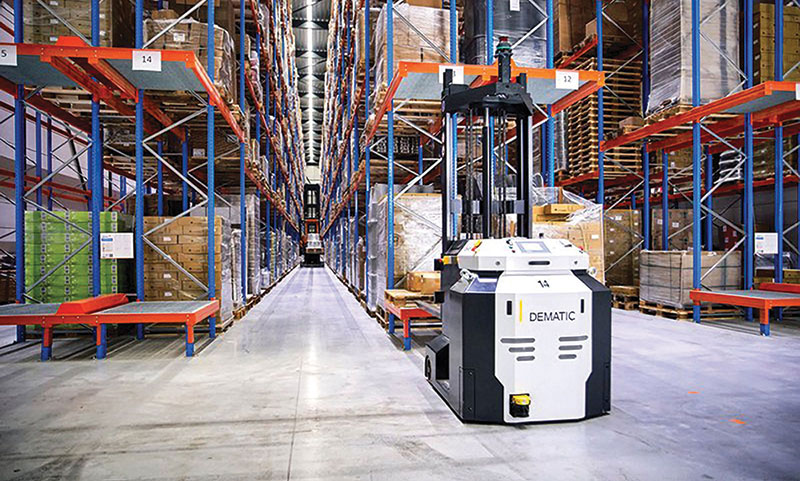
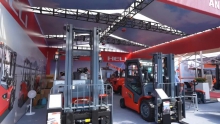
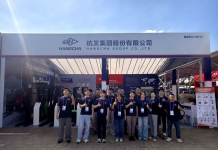


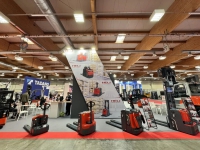
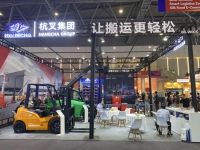

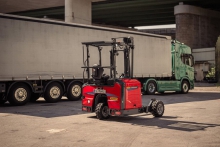

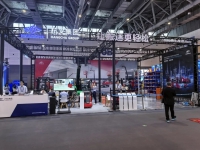


 粤公网安备 44010602003952号
粤公网安备 44010602003952号